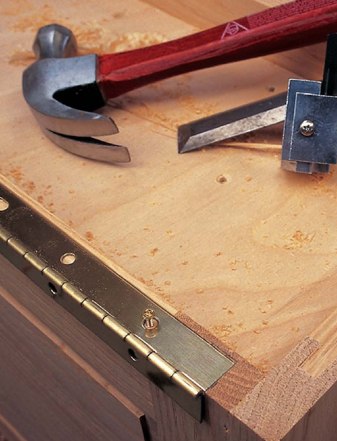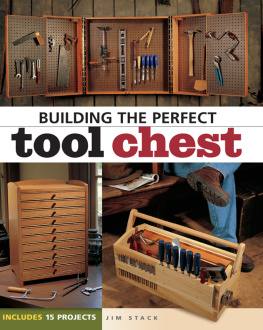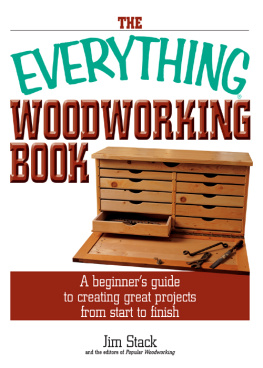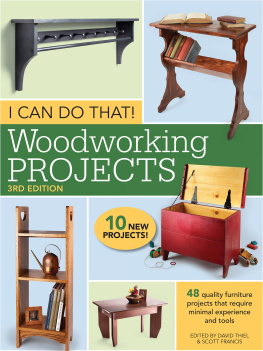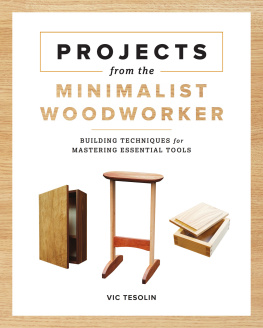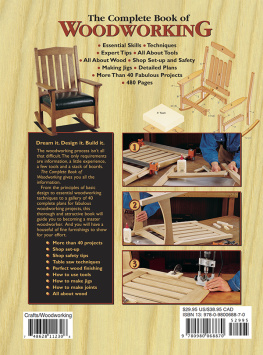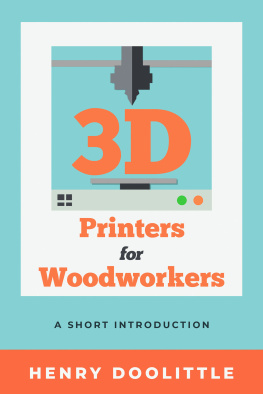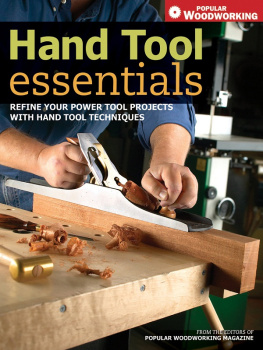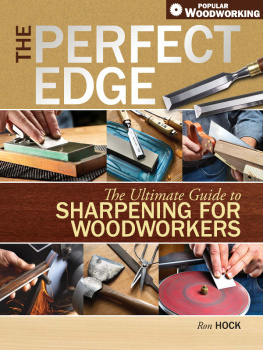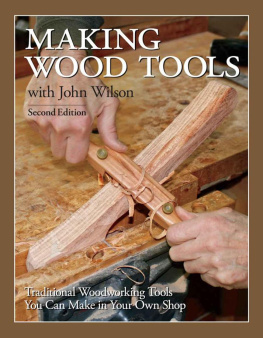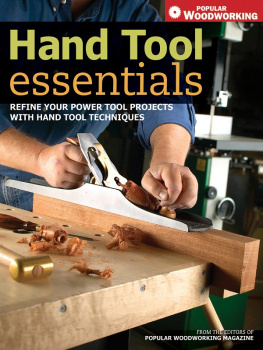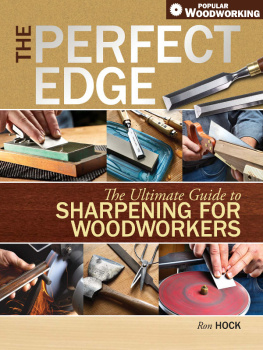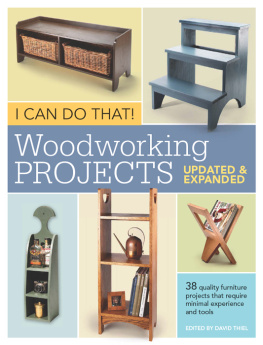Thank you for purchasing this Popular Woodworking eBook.
Sign up for our newsletter and receive special offers, access to free content, and information on the latest new releases and must-have woodworking resources! Plus, receive a coupon code to use on your first purchase from ShopWoodworking.com for signing up.
or visit us online to sign up at
http://popularwoodworking.com/ebook-promo
Metric Conversion Chart
TO CONVERT | TO | MULTIPLY BY |
Inches | Centimeters | 2.54 |
Centimeters | Inches | 0.4 |
Feet | Centimeters | 30.5 |
Centimeters | Feet | 0.03 |
Yards | Meters | 0.9 |
Meters | Yards | 1.1 |
Sq. Inches | Sq. Centimeters | 6.45 |
Sq. Centimeters | Sq. Inches | 0.16 |
Sq. Feet | Sq. Meters | 0.09 |
Sq. Meters | Sq. Feet | 10.8 |
Sq. Yards | Sq. Meters | 0.8 |
Sq. Meters | Sq. Yards | 1.2 |
Pounds | Kilograms | 0.45 |
Kilograms | Pounds | 2.2 |
Ounces | Grams | 28.3 |
Grams | Ounces | 0.035 |
Building the Perfect Tool Chest. Copyright 2002 by Jim Stack. All rights reserved.
No part of this book may be reproduced in any form or by any electronic or mechanical means including information storage and retrieval systems without permission in writing from the publisher, except by a reviewer, who may quote brief passages in a review. Published by Popular Woodworking Books, an imprint of F&W Publications, Inc., 4700 East Galbraith Road, Cincinnati, Ohio, 45236. First edition.
Visit our Web site at www.popularwoodworking.com for information on more resources for woodworkers.
Other fine Popular Woodworking Books are available from your local bookstore or direct from the publisher.
Library of Congress Cataloging-in-Publication Data
is available from the publisher.
ISBN 1-55870-650-X (pbk. : alk. paper)
eISBN 13: 978-1-4403-1628-9
EDITOR: Jennifer Ziegler
DESIGNER: Brian Roeth
PAGE LAYOUT ARTIST Camille Ideis
PRODUCTION COORDINATOR: Mark Griffin
STEP-BY-STEP PHOTOS AND TECHNICAL ILLUSTRATIONS: Jim Stack
CHAPTER OPENER PHOTOS: Al Parrish
Read This Important Safety Notice
To prevent accidents, keep safety in mind while you work. Use the safety guards installed on power equipment; they are for your protection. When working on power equipment, keep fingers away from saw blades, wear safety goggles to prevent injuries from flying wood chips and sawdust, wear headphones to protect your hearing, and consider installing a dust vacuum to reduce the amount of airborne sawdust in your woodshop. Dont wear loose clothing, such as neck-ties or shirts with loose sleeves, or jewelry, such as rings, necklaces or bracelets, when working on power equipment. Tie back long hair to prevent it from getting caught in your equipment. People who are sensitive to certain chemicals should check the chemical content of any product before using it. The authors and editors who compiled this book have tried to make the contents as accurate and correct as possible. Plans, illustrations, photographs and text have been carefully checked. All instructions, plans and projects should be carefully read, studied and understood before beginning construction. In some photos, power tool guards have been removed to more clearly show the operation being demonstrated. Always use all safety guards and attachments that come with your power tools. Due to the variability of local conditions, construction materials, skill levels, etc., neither the author nor Popular Woodworking Books assumes any responsibility for any accidents, injuries, damages or other losses incurred resulting from the material presented in this book. Prices listed for supplies and equipment were current at the time of publication and are subject to change. Glass shelving should have all edges polished and must be tempered. Untempered glass shelves may shatter and can cause serious bodily injury. Tempered shelves are very strong and if they break will just crumble, minimizing personal injury.
SPECIAL CREDITS
I would like to thank Chris Schwarz, senior editor of Popular Woodworking magazine, and Glen Huey, contributing editor to Popular Woodworking magazine, for their contributions to this book.
Chris constructed the plane cabinet, took the step-by-step photos, wrote the captions and drew the technical illustrations.
Glen and his father, Malcolm, built the 21st-century tool cabinet, took the step-by-step photos and wrote the captions.
John Hutchinson drew the technical illustrations for Glens project.
ABOUT THE AUTHOR

Jim is the editor of Popular Woodworking Books at F&W Publications. As such, he acquires authors to write woodworking books.
Educated at the Berklee College of Music in Boston, Massachusetts, he received a bachelors degree in music composition. Jim feels that even though his livelihood is made through woodworking, he gained invaluable experience while studying music.
The skills involved in any artistic endeavor transcend the particular endeavor and make it possible to cross over into other areas of artistic expression.
Jim also loves to ride on single-track mountain bike trails, which he says helps him keep his sanity. There are, however, those who question that theory.
ACKNOWLEDGMENTS
I want to thank my friends and co-workers here at F&W Publications for supporting me in this book project and contributing all their talents in the editing, design and layout, photo taking and production.
Thanks also to all the cabinetmakers and furniture makers that I have known and worked with for the past 23 years. I stole all the ideas and techniques I could from each of you!
dedication
I dedicate this book to all the wood-workers who build works of wonder with their tools.
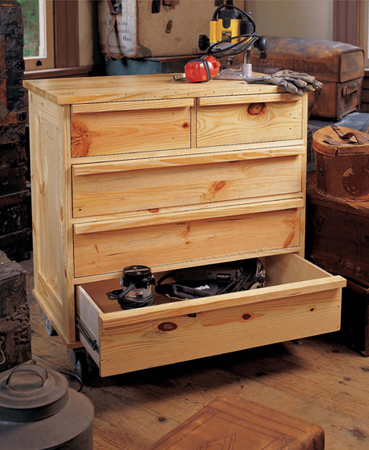
introduction
